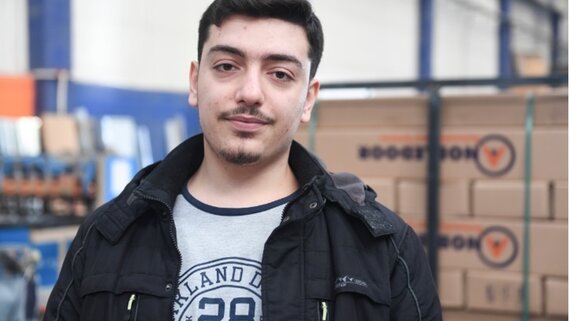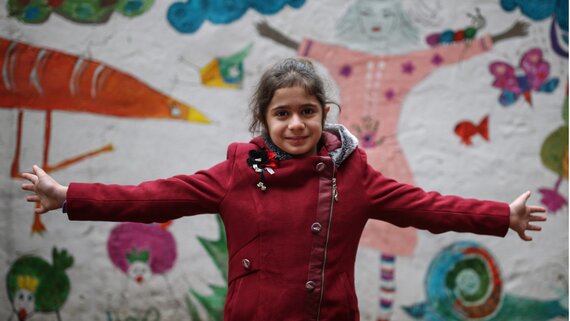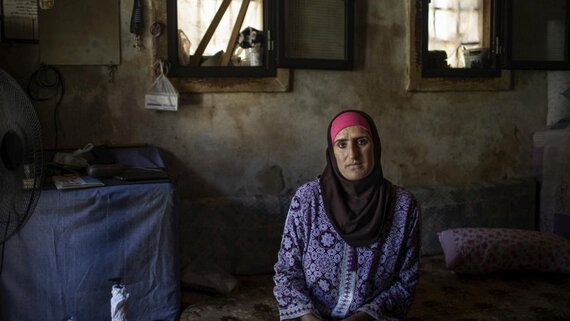Analysis of the context, crisis and needs
The Syrian refugee situation continues to drive one of the world’s largest humanitarian and development crises. Egypt, Iraq, Jordan, Lebanon and Turkey continue to collectively host over 5.6 million registered Syrian refugees. In addition to Syrians, these countries also host hundreds of thousands of refugees of other nationalities, asylum-seekers, and Stateless persons. Many of these people have been in displacement for a decade or more, are living in high levels of poverty, and have survived because of the continued generosity of host governments and local communities, supported by the international community.
In addition to hosting large-scale refugee populations, the 3RP countries continue to be significantly impacted by the COVID-19 pandemic and its multiple waves, as well as associated socioeconomic challenges, some of which pre-date the pandemic. At the macro level, economic forecasts for 3RP countries suggest a long period of recovery and slower growth compared to previous years, which has affected the availability of resources to ensure the provision of basic services, such as health and education. At the household level, poverty and unemployment rates remain extremely high, and the overall average household income across the region has decreased sharply compared to previous years. Among refugees particularly, many children remain out of school across the region and face considerable protection risks. Furthermore, this overall situation sharpened inequalities and impacted social cohesion and stability between refugees and host communities.

Beirut, Lebanon
Hala, a 35-year-old Syrian refugee, combs her youngest daughter’s hair at their home in Beirut. Her family of six all sleep together in a single damp room, the air heavy with the smell of mold that stains the walls and furniture. Hala describes the downward spiral their lives have taken since fleeing the conflict in their home country and coming to Lebanon 10 years ago. “Our main objective was to get out of the war with our lives,” she said of their escape from their hometown of Hama in 2011. “In Lebanon there was a little bit of serenity. Our kids were still going to school, they were learning, they would become something in the future and make their mother and father proud.” But Lebanon’s financial crisis has sent the currency plummeting and prices of everyday basics rising. Combined with the devastating economic effects of the pandemic, the number of Syrian refugees in Lebanon living under the extreme poverty line increased to almost 90 per cent by the end of 2020. “It’s like we’re living a daily war; a silent, domestic war,” said Hala.
UNHCR/Haidar DarwishThe 3RP 2022 Regional Needs Overview provides a comprehensive overview of needs in 3RP countries. In addition to the needs of the large-scale refugee populations, the number of impacted host-community members has now reached the highest figure in a decade. Protection-related intersectoral needs, particularly those related to legal status, gender, age and people with special needs, have been highlighted across regional assessments. The need for broader availability and improved access to quality education, livelihoods opportunities, and quality food and health care are all essential. Enhancing local capacities, specifically in improving basic service provision and expanding social safety net programmes inclusive of all vulnerable people, is necessary to ensure the sustainability and efficiency of the response. And given the protracted nature of their displacement, there must be an increased focus on durable solutions for Syrian refugees.
Projected situation in 2022 and beyond
Given the continued impacts of the COVID-19 pandemic, tough socioeconomic conditions and other compounding crises, it is anticipated that the large rise in needs among refugees and host-community members across the 3RP countries will be sustained and may worsen in some countries. Many people have already lost their livelihoods and have been pushed further into poverty and food insecurity, with the most vulnerable remaining in day-to-day survival mode.
Access to quality basic health and education services will remain challenged. Female-headed households will continue to be more vulnerable in terms of livelihoods, income, food security and violence. Protection risks, such as gender-based violence (GBV), sexual abuse and exploitation, domestic violence, forced and child marriage and child labour may increase in some countries. And social cohesion and stability between refugees and host communities could be further challenged by political and socioeconomic factors in some countries.

Gaziantep, Turkey
“One day I saw an advertisement on social media and that changed my life,” says this 23-year-old Syrian living in Gaziantep, Turkey. He now works in foreign trade for a local elevator manufacturer that also exports to EU markets and the Middle East. He has been working at the company for eight months while pursuing his studies in his final year at Gaziantep University’s International Trade and Logistics Department. “I have clients from 10 countries, and I am trying to help my company expand to other markets as well.”
UNDP/Levent KuluAgainst this backdrop of rising needs, funding trends for the 3RP are declining in real terms, impacting the ability of 3RP actors to meet the most urgent needs as well as invest in the resilience of local communities and institutions who deliver basic services to all. The 3RP witnessed a reduction of some US$350 million in the first half of 2021, and cuts in assistance have been adopted in some countries. With host countries’ resources being stretched to their limits – a situation that will likely continue in the coming year – as well as the difficult global funding environment, ensuring financial support to host countries and to the 3RP remains a top priority.
Syria 3RP
Response priorities in 2022
In support of governments’ ongoing efforts, over 270 partners across the five 3RP countries will continue to assist refugees and other vulnerable populations as well as impacted members of their host communities in 2022. This includes, where possible, taking into consideration the needs of all persons of concern, Syrian and non-Syrian alike, including asylum-seekers and Stateless of other nationalities, in the spirit of the Global Compact on Refugees (GCR) and the ‘One Refugee’ approach.
Working within a network of partnerships at the regional, national and local levels spanning intergovernmental organizations, government agencies, NGOs, civil-society organizations, international financial institutions and the private sector, 3RP actors will also continue to strengthen the capacity of public institutions to provide access to quality basic services, in line with the GCR and the 2030 Agenda for Sustainable Development. These initiatives will further support resilience-building for all and contribute to strengthening national public institutions’ response capacities, as well as ensure that no one is left behind.

Istanbul, Turkey
After 10 years of displacement, life is no easier for Syrian refugees, including for this 13-year-old refugee girl who lives in Istanbul, Turkey, with her family. They fled Syria five years ago. She has several brothers and sisters, and she is in fourth grade.
UNHCR/Emrah GurelIn particular, the 3RP response priorities in 2022 will aim to make progress in the following four areas:
Protecting people: The protection of people will continue to be at the centre of the 3RP response to ensure no one is left behind. Key programmes and activities in this area will include support for access to territory and asylum and basic rights for refugees, while preventing and reducing statelessness through legally recognized documentation and favourable legal provision. Furthermore, efforts to prevent GBV will be strengthened along with mitigating the risk of its occurrence. Child protection services will be expanded as well as efforts to nurture community protection and refugee and host-community cohesion, while protection from sexual exploitation and abuse (PSEA) will continue to reinforce awareness and trainings on addressing SEA.
Promoting durable solutions: Refugees continue to require access to territory, international protection and support in countries of asylum. Given the protracted situation, opportunities for durable solutions are urgently needed to enable refugees to look to the future with hope and dignity. Key programmes and activities in this area include resettlement and complementary pathways, support for people who take a voluntary and informed decision to return to Syria, as well as promoting local opportunities.
Contributing to dignified lives: As the crisis continues to impact protection and the socioeconomic well-being of vulnerable populations, supporting enabling conditions and opportunities for all to lead a dignified life is a priority for all partners across a range of sectors. To allow families to meet their basic needs, the 3RP will respond in a multisectoral manner (education, health and multipurpose cash assistance), which includes advocating for the inclusion of refugees in social protection programmes. Moreover, efforts will continue towards economic and employability opportunities for refugees and host communities alike while ensuring minimum standards of living for the most affected communities.
Enhancing local and national capacities: Enhancing local and national capacities across the region will remain one of the top priorities of the 3RP – broadening the capacity of national and local institutions and systems to provide protection and essential services.
The 3RP and Lebanon Crisis Response Plan (LCRP)
The unprecedented multi-layered political, economic and public health crises currently facing Lebanon are undermining the subsistence capacity of already vulnerable refugees and host communities across the country, in particular for women, girls and boys. Individuals and families are falling deeper into poverty due to currency depreciation, high inflation, rising food prices and loss of income. The COVID-19 outbreak has exacerbated the situation by reducing vulnerable populations’ access to food, livelihood opportunities and other basic services. The 2021 Vulnerability Assessment for Syrian Refugees (VASyR) revealed that nine out of ten refugees continue to live below the extreme poverty line with increasingly negative consequences, including a rise in child labour and incidences of gender-based violence and a drop in individuals accessing legal residency. Threats of evictions are on the rise as families are increasingly unable to pay rent.
Gaps in supply chains (including fuel and electricity) are impacting the operational environment, including access to services for beneficiaries. LCRP partners are facing increased pressure from local authorities and communities amid spiraling needs. Refugee-host community relations in Lebanon are on an increasingly negative trajectory. In August 2021, through the regular UNDP-ARK perception surveys, 36 per cent of respondents reported negative inter-communal relations compared to 21 per cent of respondents reporting negative inter-communal relations in July 2018. Relationships are becoming increasingly strained, with pressure points ranging from access to services and job competition, to historical grievances between the communities.

Tripoli, Lebanon
A Syrian refugee from Homs lives in Tripoli’s economically challenged Bab al-Tabbaneh neighbourhood. Syrian refugees in Lebanon struggle to survive amid the worst socioeconomic crisis in decades. Finding a dignified and safe shelter continues to be a struggle, with almost 60 per cent of Syrian refugee families living in dangerous, substandard or overcrowded shelters.
UNHCR/TripoliThe situation in Lebanon continues to look bleak for refugees and host communities in 2022. Delays to government-led social safety nets schemes mean that many Lebanese families will not imminently receive the assistance they have been waiting for. State institutional capacity has been significantly impacted by the compounded crises, with a real risk of health, education and social institutions being unable to provide services. Municipalities that have long been at the forefront of responding to the Syria crisis now face gaps in their ability both to provide services and respond to localized emergencies, given insufficient resources and supply gaps.
In 2022, the LCRP’s dual focus on refugees and host communities and the nexus approach will be even more critical to contributing to reducing the tensions and preserving protection space. The LCRP will target 1.5 million Syrian refugees, 207,700 Palestine refugees and 1.5 million Lebanese. The plan will retain a focus on strengthening protection for vulnerable people, including through the provision of legal services and case management for specific groups such as people with disabilities, GBV survivors and children at risk. Ensuring access to basic services, including education and health as well as water and shelter, will continue to be prioritized through interventions that seek to meet needs across the country.
Economically vulnerable refugees and host communities will continue to be supported with cash-based assistance and access to dignified work, ensuring a harmonization of transfer values and currencies of disbursement across sectors, in order to mitigate tensions and protection risks. Support to small- and medium-sized businesses, municipalities and other local entities including social development centres, primary healthcare centres and water establishments will remain a key component of the LCRP’s support to host communities, with approaches designed to contribute to social stability in Lebanon.
Further reading
Source: UNHCR
Source: UNHCR
References
- Regional Refugee & Resilience Plan - Regional Needs Overview, 2022.
- UNHCR - The Global Compact on Refugees
- United Nations - The 2030 Agenda for Sustainable Development
- United Nations - "Universal Values: Principle Two: Leave No One Behind"



